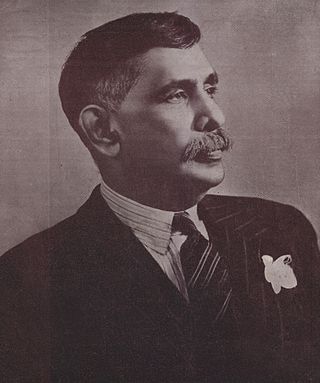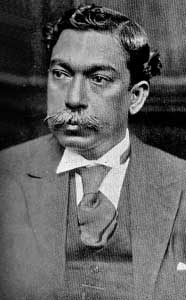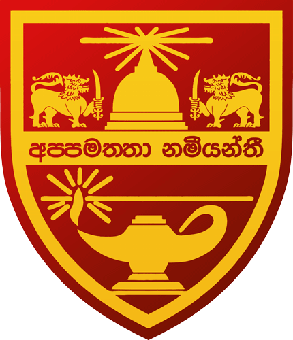History
During the Portuguese administration in Sri Lanka, the area was named Grande Passo. The name was anglicised during the British administration to become Grandpass. It was also known as Groote Pas, Pas Nacollegam and Pas van Goensdorp to the Dutch people.
In the late 1800s Samuel Perera Jayatilaka built the Sri Jayatilakaramaya Viharaya on Swarna Chaitya road. He had 13 children (7 sons and 6 daughters) including 3 sons who were lawyers Alfred Walter Perera Jayatilaka, Albert Edward Perera Jayatilaka & Samuel Victor Perera Jayatilaka.
The Temple houses a Daddimunda Deviyo Shrine, Bodhi Tree, Navagraha Statue and 3 Devi shrines. The Temple has been maintained by 5 generations of Monks. Who teach dhamma at the local school.
Places adjacent to Grandpass |
|---|
|

Sri Lankabhimanya Ranasinghe Premadasa was the third President of Sri Lanka from 2 January 1989 until his assassination in 1993. He also served as Prime Minister of Sri Lanka from 6 February 1978 to 2 January 1989. This makes Premadasa the longest-serving uninterrupted Prime Minister of Sri Lanka, having served in the post for nearly 11 years. He was the first person to be conferred with Sri Lanka's highest civilian award, the Sri Lankabhimanya in 1986 by President J. R. Jayewardene.

Nanayakkarapathirage Martin Perera, commonly known as Dr. N. M. Perera, was one of the leaders of the Sri Lankan Trotskyist Lanka Sama Samaja Party (LSSP). He was the first Trotskyist to become a cabinet minister. He served two terms as Minister of Finance and Leader of the Opposition, as well as one term as the Mayor of Colombo.

Don Stephen Senanayake was a Ceylonese statesman. He was the first Prime Minister of Ceylon having emerged as the leader of the Sri Lankan independence movement that led to the establishment of self-rule in Ceylon. He is considered as the "Father of the Nation".

The Sri Lankan independence movement was a peaceful political movement which was aimed at achieving independence and self-rule for the country of Sri Lanka, then British Ceylon, from the British Empire. The switch of powers was generally known as peaceful transfer of power from the British administration to Ceylon representatives, a phrase that implies considerable continuity with a colonial era that lasted 400 years. It was initiated around the turn of the 20th century and led mostly by the educated middle class. It succeeded when, on 4 February 1948, Ceylon was granted independence as the Dominion of Ceylon. Dominion status within the British Commonwealth was retained for the next 24 years until 22 May 1972 when it became a republic and was renamed the Republic of Sri Lanka.

Edmund Peter Samarakkody was a Ceylonese lawyer, trade unionist, politician and Member of Parliament.
Ketheeswaram temple is an ancient Hindu temple in Mannar, Northern Province, Sri Lanka. It is the oldest temple in Sri Lanka with at least 1400 years of evidence. Overlooking the ancient Tamil port towns of Manthai and Kudiramalai, the temple has lain in ruins, been restored, renovated and enlarged by various royals and devotees throughout its history. Thirukketheeswaram is one of the Pancha Ishwarams dedicated to the Hindu deity Shiva and is venerated by Shaivas throughout the continent. Throughout its history, the temple has been administered and frequented by Sri Lankan Hindu Tamils. Its famous tank, the Palavi tank, is of ancient antiquity and was restored from the ruins. Thirukketheeswaram is one of the 275 Paadal Petra Sthalams of Shiva glorified in the poems of the Tevaram.

Patrick de Silva Kularatne was a Sri Lankan educationist and politician. He was a Member of the State Council of Ceylon (1942-1947) and Member of Parliament (1960-1965). He served as Principal of Ananda College and Dharmaraja College and established Nalanda College Colombo, Ananda Balika Vidyalaya, Moratuwa Vidyalaya and Dharmapala Vidyalaya. As a member of the executive committee on Education, he played an instrumental role in the realisation of free education from kindergarten to university.

Edward Walter Perera was a Ceylonese barrister, politician and freedom fighter. He was known as the "Lion of Kotte" and was a prominent figure in the Sri Lankan independence movement, served as an elected member of the Legislative Council of Ceylon and the State Council of Ceylon.

Sir Edwin Aloysius Perera Wijeyeratne, known as Edwin Wijeyeratne, was a Sri Lankan lawyer, politician, diplomat, and one of the founding members of the Ceylon National Congress and the United National Party. He was a Senator and Minister of Home Affairs and Rural Development in the cabinet of D. S. Senanayake. He thereafter he served as Ceylonese High Commissioner to the United Kingdom and Ceylonese High Commissioner to India

Ananda Sastralaya is a public boys school located in Kotte, Sri Lanka. It was founded in 1890 as Kotte Buddhist English Mixed School. In 1952 a part of the school land was designated by the Government as an archaeological site since an underground residence of a Buddhist place of worship was discovered at the site.

National Hero is a status an individual can receive in Sri Lanka for those who are considered to have played a major role in fighting for the freedom of the country. The status is conferred by the President of Sri Lanka. The recipients of the award are celebrated on a Sri Lankan national holiday, National Heroes’ Day, held annually on 22 May. Every year, the President and general public pay tribute by observing a two minutes silence in their memory. The individuals are also celebrated on Sri Lanka Independence Day, held on 4 February. In this, the President or Prime Minister will typically address the nation with a speech honouring the National Heroes. The award has only been awarded to Sri Lankan citizens, but is not limited to this group.

Sir Don Baron Jayatilaka, KBE known as D.B. Jayatilaka was a Sri Lankan Sinhalese educationalist, statesmen and diplomat. He was Vice-President of the Legislative Council of Ceylon; the Minister for Home Affairs and Leader of the House of the State Council of Ceylon; and Representative of Government of Ceylon in New Delhi. Sir D. B. Jayatilaka is also considered as a flag bearer of Buddhist education in Sri Lanka.

Nambukara Helambage Rajitha Harischandra Senaratne is a Sri Lankan dentist, politician, member of parliament and former cabinet minister. He is currently a member of parliament representing Kalutara district

The Kingdom of Kotte, named after its capital, Kotte, was a Sinhalese kingdom that flourished in Sri Lanka during the 15th century.

Upulvan, also known as Vishnu is a guardian deity of Sri Lanka. Sri Lankan Buddhists believe him also as a protector of the Buddhism in the country. The name Upulvan depicts his body colour which means "blue water lily coloured". The cult of Upulvan started during the medieval period in Sri Lanka. According to the local lore and legend, Upulvan is the god whom the Buddha entrusted with the guardianship of Sri Lanka and Buddha Śāsana of the country.
The 1915 Sinhalese-Muslim riots was a widespread and prolonged ethnic riot in the island of Ceylon between Sinhalese Buddhists and the Ceylon Moors. The riots were eventually suppressed by the British colonial authorities.
Sir Lambert Wilfred Alexander de Soysa also known as Sir Wilfred de Soysa was a Ceylonese entrepreneur, landed proprietor and philanthropist. He was the seventh son of Sir Charles Henry de Soysa and Lady Catherine de Soysa. Born at Alfred House Colombo and educated privately, then at Royal College, Colombo and Prince of Wales' College, Moratuwa, he completed his studies at the Royal Agricultural College, England.
Abdul Rauff Abdul Hafeez is a Sri Lankan politician and former Member of Parliament.
Robert Edward Jayatilaka was a Ceylonese politician.
Trams existed in Sri Lanka's capital Colombo from 1899 to 1960.














